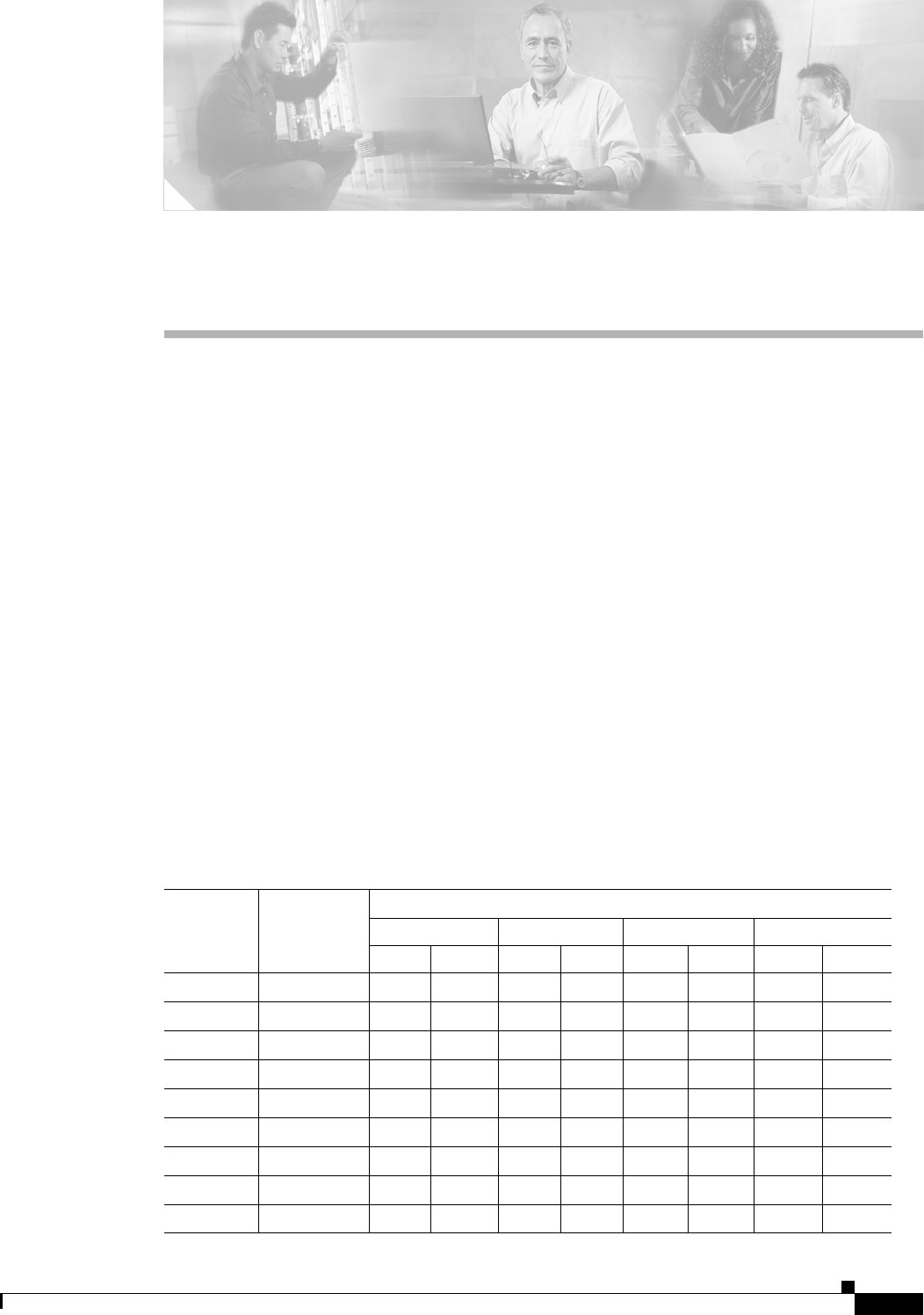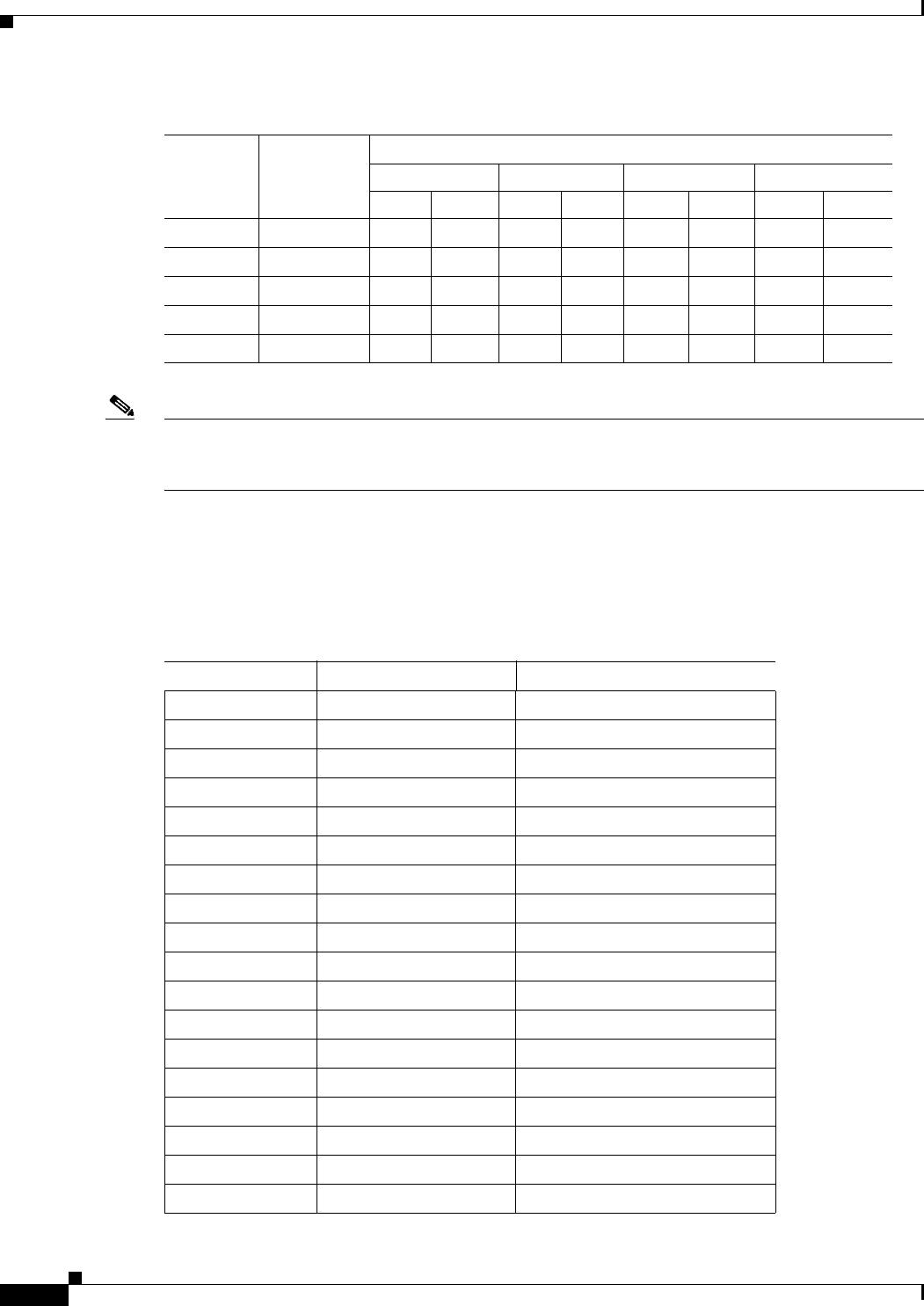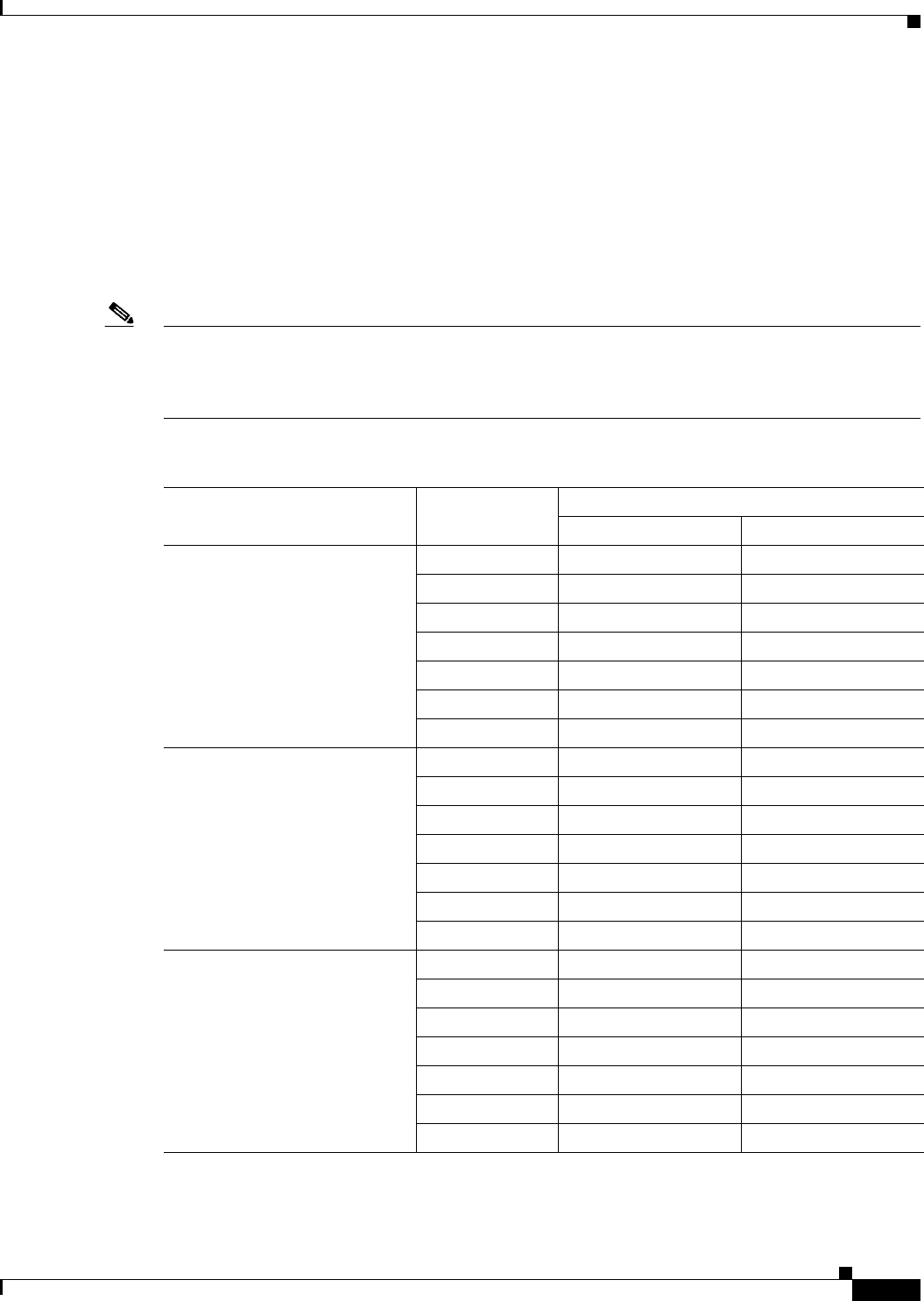Cisco Systems XSCLCR15 4.9 GHz WMIC Mini PCI Module User Manual o13chan
Cisco Systems Inc 4.9 GHz WMIC Mini PCI Module o13chan
Contents
OEM User Manual 2

B-1
Cisco 3200 Series Wireless MIC Software Configuration Guide
OL-7734-02
APPENDIX
B
Channels and Antenna Settings
This appendix lists the IEEE 802.11g (2.4-GHz) channels, maximum power levels, and antenna gains
supported by the world’s regulatory domains.
The following topics are covered in this appendix:
•Channels, page B-1
•Maximum Power Levels and Antenna Gains, page B-3
See the “Configuring Radio Transmit Power (2.4-GHz Radio Only)” in the “Configuring Radio Settings”
chapter for instructions about how to change the radio output power.
Channels
This section describes the channels for 802.11b/g (2.4-GHz) and the 4.9-GHz bands.
IEEE 802.11g (2.4-GHz Band)
The channel identifiers, channel center frequencies, and regulatory domains of each IEEE 802.11g
22-MHz-wide channel are shown in Table B-1.
Table B-1 Channels for IEEE 802.11g
Channel
Identifier
Center
Frequency
(MHz)
Regulatory Domains
Americas (–A) EMEA (–E) Israel (–I) Japan (–J)
CCK OFDM CCK OFDM CCK OFDM CCK OFDM
12412XXXX––XX
22417XXXX––XX
32422XXXX––XX
42427XXXX––XX
52432XXXXXXXX
62437XXXXXXXX
72442XXXXXXXX
82447XXXXXXXX
92452XXXX––XX

B-2
Cisco 3200 Series Wireless MIC Software Configuration Guide
OL-7734-02
Appendix B Channels and Antenna Settings
Channels
Note Mexico is included in the Americas (–A) regulatory domain; however, channels 1 through 8 are for
indoor use only while channels 9 through 11 can be used indoors and outdoors. Users are responsible for
ensuring that the channel set configuration is in compliance with the regulatory standards of Mexico.
4.9-GHz Band
The channel identifiers, channel center frequencies, and channel width are shown in Table B-2.
10 2457 X X X X – – X X
11 2462 X X X X – – X X
12 2467 – – X X – – X X
13 2472 – – X X – – X X
14 2484 – – – – – – X –
Table B-1 Channels for IEEE 802.11g
Channel
Identifier
Center
Frequency
(MHz)
Regulatory Domains
Americas (–A) EMEA (–E) Israel (–I) Japan (–J)
CCK OFDM CCK OFDM CCK OFDM CCK OFDM
Table B-2 Channels, Center Frequencies, and Channel Widths
Channel Center Frequency Channel Width
1 4940.5 not supported
2 4941.5 not supported
3 4942.5 5-MHz
4 4943.5 not supported
5 4944.5 not supported
6 4947.5 5-MHz
7 4952.5 5-MHz, 10-MHz, or 20-MHz
8 4957.5 5-MHz
9 4962.5 5-MHz or 10-MHz
10 4967.5 5-MHz
11 4972.5 5-MHz, 10-MHz, or 20-MHz
12 4977.5 5-MHz
13 4982.5 5-MHz or 10-MHz
14 4985.5 not supported
15 4986.5 5-MHz
16 4987.5 not supported
17 4988.5 not supported
18 4989.5 not supported

B-3
Cisco 3200 Series Wireless MIC Software Configuration Guide
OL-7734-02
Appendix B Channels and Antenna Settings
Maximum Power Levels and Antenna Gains
Maximum Power Levels and Antenna Gains
IEEE 802.11g (2.4-GHz Band)
An improper combination of power level and antenna gain can result in equivalent isotropic radiated
power (EIRP) above the amount allowed per regulatory domain. Table B-3 indicates the maximum
power levels and antenna gains allowed for each IEEE 802.11g regulatory domain.
Note To meet regulatory restrictions, the external antenna BR1300 configuration and the external antenna
must be professionally installed. The network administration or other IT professional responsible for
installing and configuring the unit is a suitable professional installer. Following installation, access to the
unit should be password protected by the network administrator to maintain regulatory compliance.
Table B-3 Maximum Power Levels Per Antenna Gain for IEEE 802.11g
Regulatory Domain
Antenna Gain
(dBi)
Maximum Power Level (mW)
CCK OFDM
Americas (–A)
(4 W EIRP maximum)
2.2 100 30
6100 30
6.5 100 30
10 100 30
13.5 100 30
15 50 20
21 20 10
EMEA (–E) and Israel(-I)
(100 mW EIRP maximum)
2.2 50 30
630 10
6.5 20 10
10 10 5
13.5 5 5
15 5 1
21 1 —
Japan (-J)
(10 mW/MHz EIRP maximum)
2.2 5 5
65 5
6.5 5 5
10 5 5
13.5 5 5
15 5 5
21 5 5

B-4
Cisco 3200 Series Wireless MIC Software Configuration Guide
OL-7734-02
Appendix B Channels and Antenna Settings
Maximum Power Levels and Antenna Gains